- Home
- Fraction Games
- Fraction Bar - Number Line Activity
Fraction Activity for Grade 3
*** Fractions Friends Forever ***
The right fraction activity for grade 3 can make a huge difference in how a child sees fractions. These activties give kids a chance to experience and handle fractions in a fun while they learn!

This first activity to help your third grader understand equivalent fractions uses fraction bars and fraction number line.
"Fraction Bar" - Fraction Number Line
Activity
Preparation:
- Print and cut out the fraction bars and fraction number lines.
- Have someone mix and shuffle the fraction bar and number line cards.
- Deal all the cards face down in rows on the table in the middle of the players.
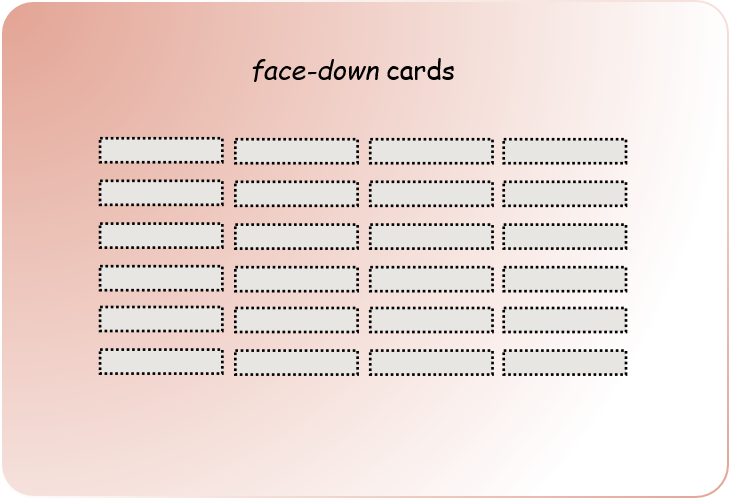
How To Play:
- To begin play, the first player turns over any two cards. The objective is to turn over two cards, a fraction bar card and fraction number line card that form a matching pair.
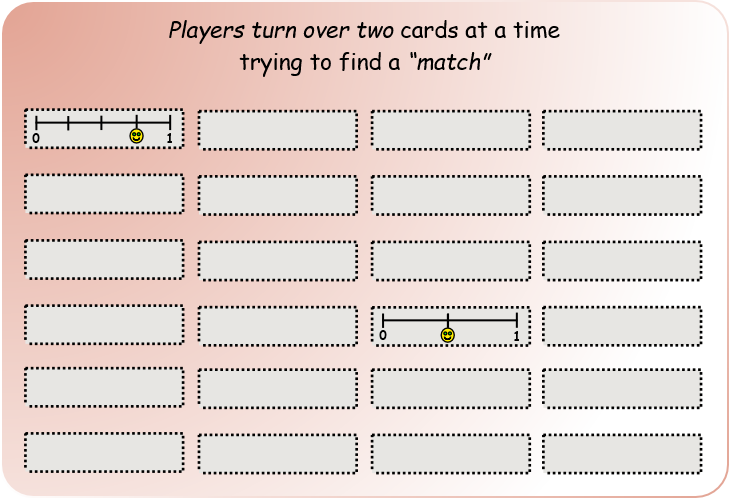
- If a player turns over a "fraction bar" and a "number line" that match (as in picture below), they pick up and keep those two cards, and they repeat the process by turning over two more cards.
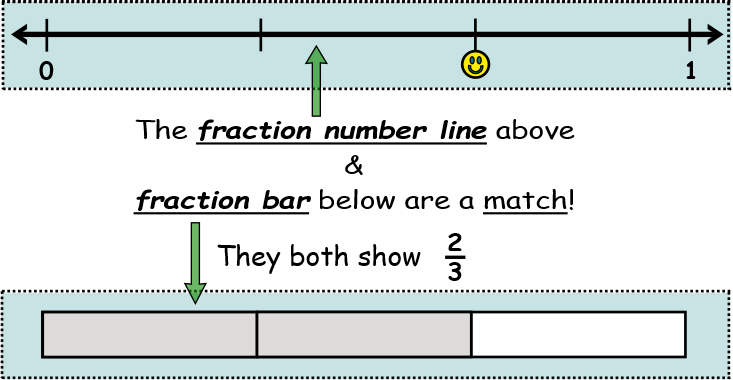
- If they don't have a match, play continues with the next player in the same way.
- The game is over when all of the cards have been used up.
- he game is over when all of the cards have been used up.
- At the end, each player counts their cards, and the player with the most cards is the winner!
Preparation:
- Deal a set of fraction bar cut-outs to each player. (Each player should have a complete set of fraction cut-outs).
- Each player is also given a game worksheet, and at the start of the activty, each player's game worksheet should be turned face-down.
How To Play:
R O U N D 1
- Designate one player to call out "GO", and that begins the game.
- Once "GO" is called out, each player turns over their game sheet and races to be the first player to correcctly pair the equivalent fractions listed on their game sheet. See pictures below.

The pictures above and below show the four pairs that players should group together for this particular game sheet. The first player to group the four pairs correctly is the winner of Round 1!
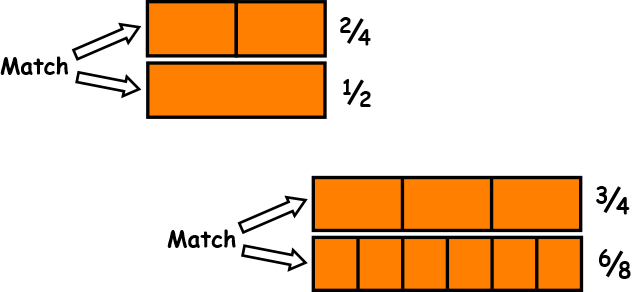
R O U N D 2
- In Round 2, players race to fill out the empty boxes in the Round 2 column of their game sheet, shown below. For example, in the box for the first fraction, they would need to write in a 1 to complete the statement 2/8 = 1/4.
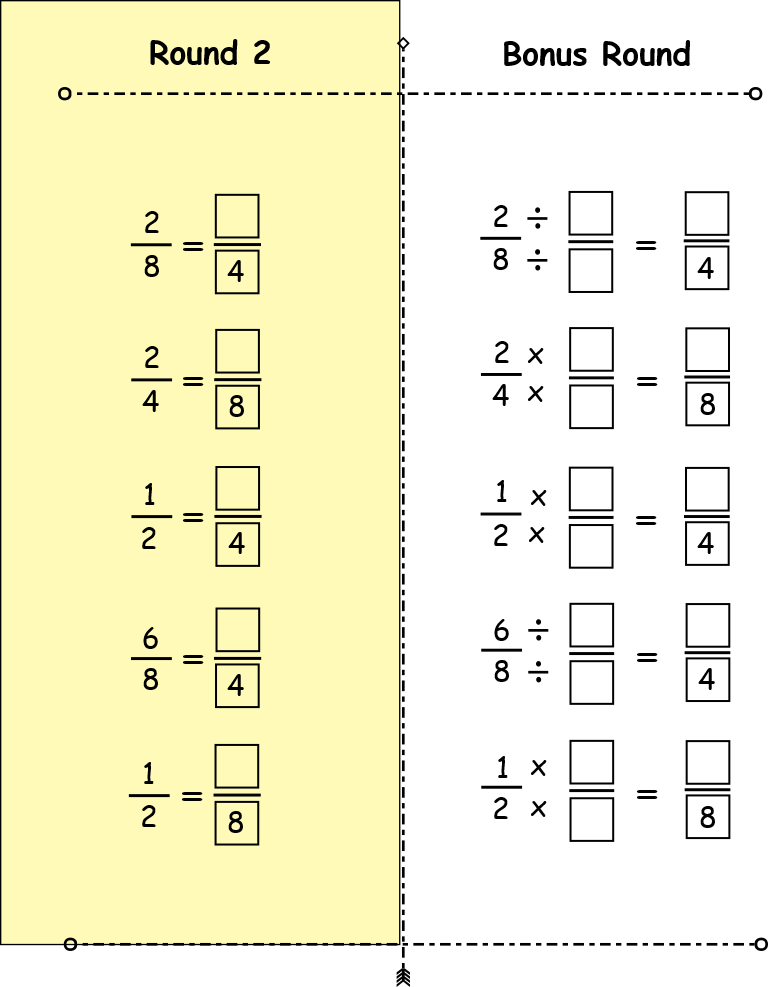
- The first player to complete the boxes in the Round 2 column is the winner of Round 2!
BONUS ROUND
- In the Bonus Round, players race to fill out the empty boxes in the Bonus Round column of their game sheet, shown below. For example, in the box for the first fraction, they would need to write in 2's after each division sign, and 1 in the empty box so the fraction at the far right = 1/4.
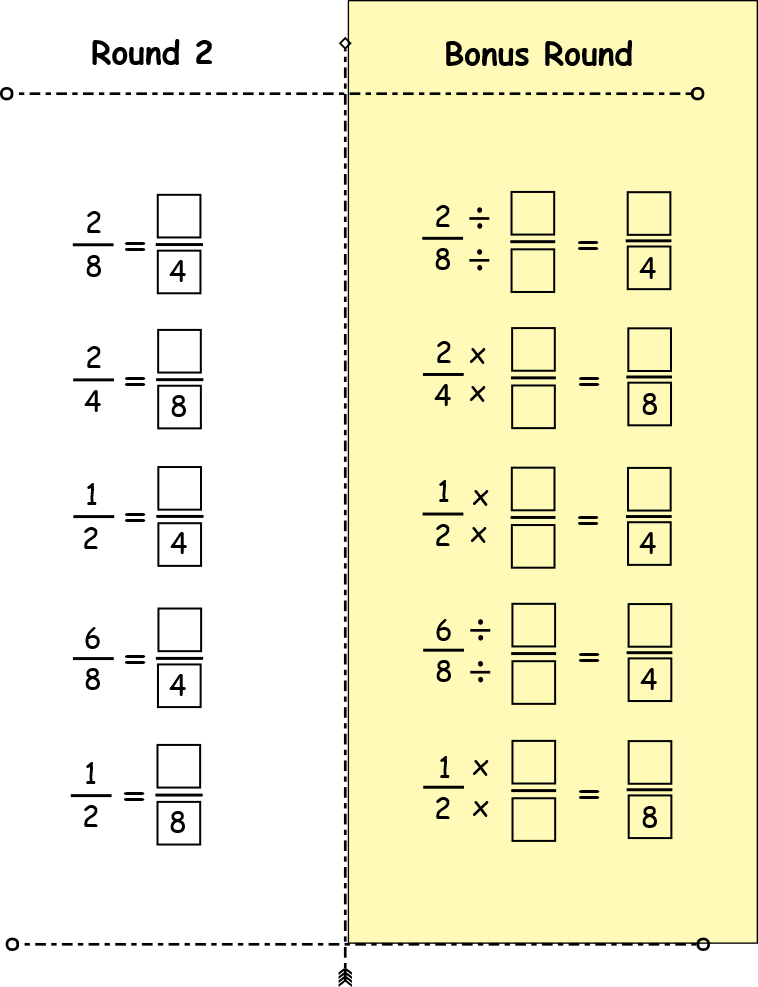
- The first player to correctly fill in all of the boxes in the Bonus Round column is the winner of that round!
Variations:
You can of course, adapt the game to you kiddos and your liking. Depending on how competetive you want to make it, you may try one of the two following ways to play:
- As explained above, and after each of the three rounds, one player is the declared winner of each particular round. So going through allthree rounds of a game, there might several winners wthin that game.
- The other way some like to play, is to have a single winner after all three rounds of the game are played. The way we do this is to award points to the winner of each round. The point system we use is below:
- The winner of Round 1 is awarded 10 points -
- The winner of Round 2 is awarded 15 points -
- The winner of the Bonus Round is awarded 25 points -
At the end of all three rounds, the game is over, and the player with the most points is the winner!
- In Round 1, players will experience and handle fractions by grouping together each pair of equivalent fractions listed on their game sheet.


